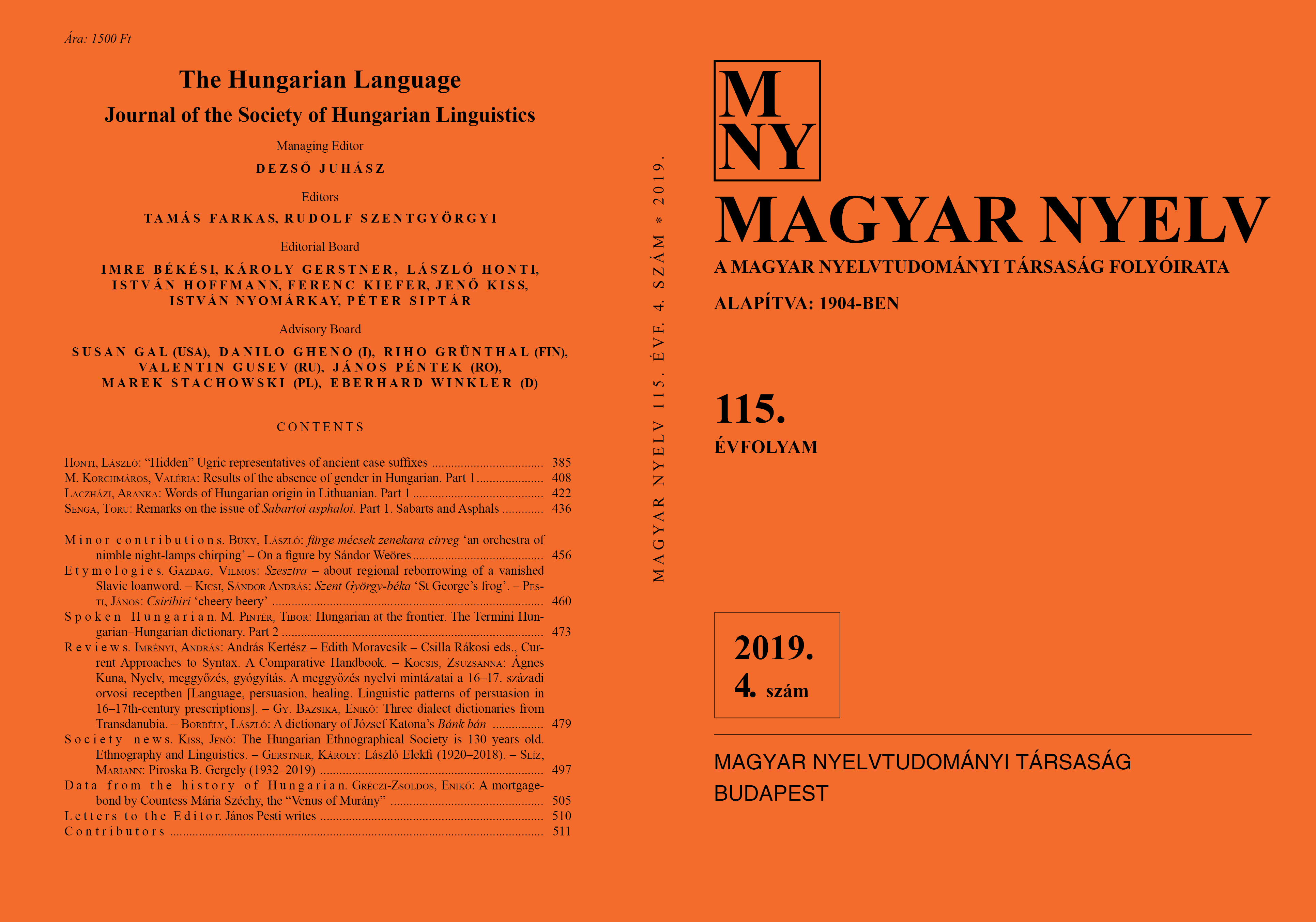Words of Hungarian origin in Lithuanian
Part 1.
DOI:
https://doi.org/10.18349/MagyarNyelv.2019.4.422Keywords:
Lithuanian language, language contacts, lexical borrowings, loanwords of Hungarian origin, Grand Duchy of LithuaniaAbstract
The aim of this paper is to survey the stock of Lithuanian words of Hungarian origin. These lexemes made their way into Lithuanian mainly via Polish, or less often via German, Belorussian, or Russian, in the sixteenth to eighteenth centuries. Hungarian borrowings constitute well-defined thematic groups in Lithuanian. For instance, military terms related to the export of Hungarian military technology form a clear subset, as do words denoting agricultural products or manufactured goods transported from Hungarian territories to Poland or the Grand Duchy of Lithuania. Of these lexemes, merely a small number have become part of the present-day literary word stock of Lithuanian, most of them are historical relics or dialectal items. Furthermore, a marked change of their meaning in Lithanian can also be observed in many cases.
Downloads
Published
Issue
Section
License
Copyright (c) 2024 Aranka Laczházi

This work is licensed under a Creative Commons Attribution-NonCommercial-NoDerivatives 4.0 International License.
Magyar Nyelv is a Diamond Open Access periodical. Documents can be freely downloaded and duplicated in an electronic format, and can be used unchanged and with due reference to the original source. Such use must not serve commercial purposes. In the case of any form of dissemination and use, Hungarian Copyright Act LXXVI/1999 and related laws are to be observed. The electronic version of the journal is subject to the regulations of CC BY-NC-ND (Creative Commons – Attribution-NonCommercial-NoDerivatives).
The journal permits its authors, at no cost and without any temporal limitation, to make pre-print copies of their manuscripts publicly available via email or in their own homepage or that of their institution, or in either closed or free-for-all repositories of their institutions/universities, or other non-profit websites, in the form accepted by the journal editor for publication and even containing amendments on the basis of reviewers’ comments. When the authors publicize their papers in this manner, they have to warn their readers that the manuscript at hand is not the final published version of the work. Once the paper has been published in a printed or online form, the authors are allowed (and advised) to use that (post-print) version for the above purposes. In that case, they have to indicate the exact location and other data of the journal publication. The authors retain the copyright of their papers; however, in the case of an occasional secondary publication, the bibliographical data of the first publication have to be included.



